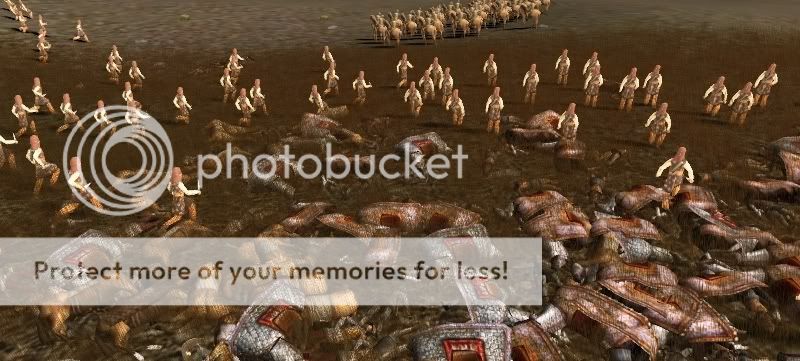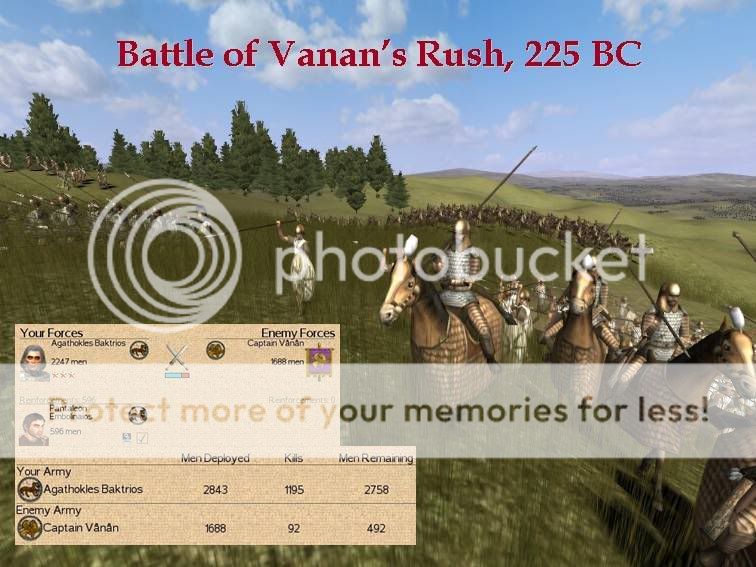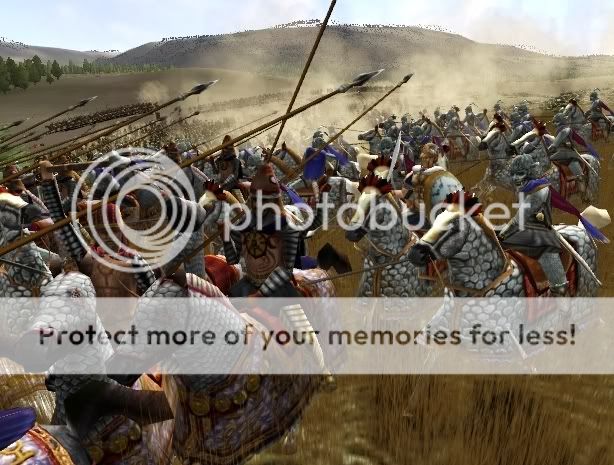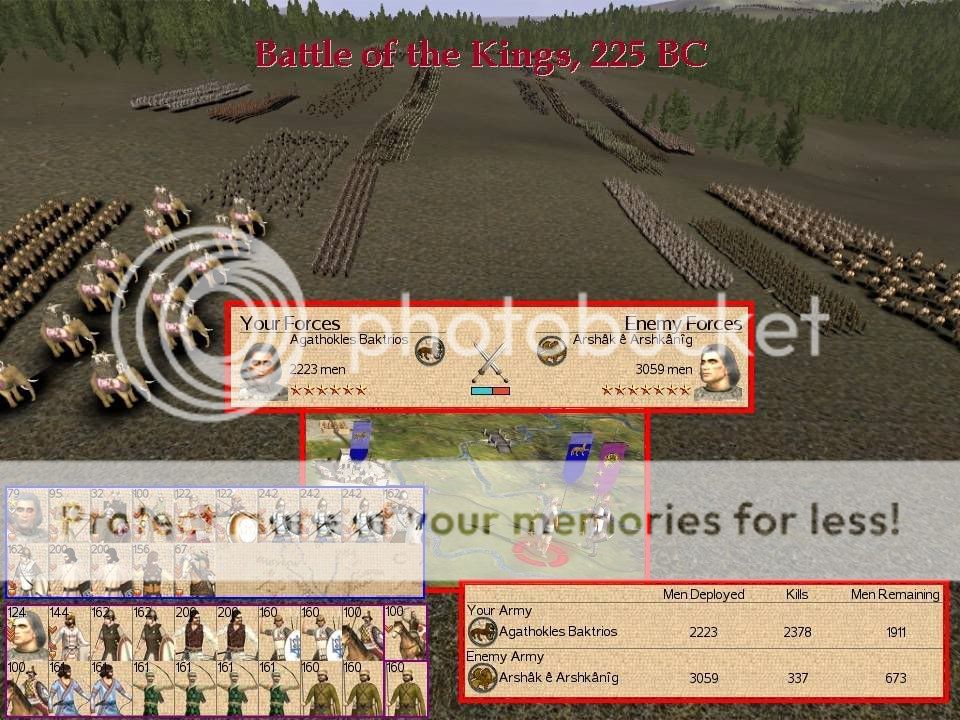Thank you again for your continuing support, friends, and please forgive me for not updating for a while - damned job keeps me too busy lately. 
Major assessment of the economy and overall state of the Baktrian Kingdom is due when I will get to the end of the reign of Agathokles, but this still a bit into the future. For now you have to contend yourselves with a brief account of another clash between the Baktrians and the Persian Shahanshah. Hope you will enjoy it!
The catastrophic failure of Persian invasion of Baktria and Aria, utter defeat of all four Persian armies mustered in the east, annexation of Margiane by Agathokles and disgraceful flight of Shahanshah Arshak from Antiocheia had not only constituted a tremendous loss of life and gold invested in the war, but also a severe blow to the prestige of the Shah. Not surprisingly Arshak became as eager to repair his reputation by a new campaign against Baktrians as his subjects grow reluctant to support this undertaking of his. Thus the next year passed in relative quiet as Agathokles was occupied with pacification of the resistive nomads who inhabited the vast steppes of newly subdued Margiane while Arshak was gathering another army and confined himself to occasional raids to plunder Baktrian borderlands.
Full-scale war broke out only at the very beginning of campaign season of the year thirty-five of Eleutheria (translators note: i.e. 225 BC) with a massive Persian invasion of Margiane.
To ease the burden of supplying his vast host Arshak divided his force into two armies which should advance towards Antiocheia in parallel, some hundred miles apart, only to join together in pincer movement if Agathokles decided to meet them with his Basilikos Stratos (The King’s Own Army) to give battle.
The first force, led by Lord Vanan headed directly northwards across the steppe, while the second one, under personal command of Shahanshah Arshak marched along the caravan route more to the east. Between them the two Persian armies would be more than a match for the Baktrians, but once again Tyche intervened in Agathokles’s favour, when a Persian messenger communicating the progress of the first army to the Shah was intercepted by a Baktrian patrol. Agathokles exploited the opportunity to the utmost. Not only did he gain precise information on the movement of the invaders, but he also supplanted the messenger with one of his own trustees to deliver a forged message to Arshak that the Vanan’s force is about a week behind schedule. The ruse brought the desired outcome, as Arshak, who was anyway hindered by his siege train, slowed his advance accordingly and thus gave Baktrians the much needed time to engage Persian forces in detail.
Battle of Vanan´s Rush
Thereafter Agathokles rushed forward to cut of Lord Vanan on his march to Antiocheia. Pressed between a river and the Baktrian army Vanan had no choice but to attempt to force his way through despite being overwhelmingly outnumbered by Baktrians and Margianian militiamen. His bet was on splitting Baktrian line in half by a steady advance of his infantrymen formed into a phalanx in a copy of Hellenic custom, which was then to be followed an exploited by a powerful charge of mighty Persian cataphracts. Sound as it was the plan failed on superior skill and morale of Baktrian phalangites who managed to stay their ground and while their adversaries were pinned down Agathokles ordered his elephants to charge the from the flank. Afterwards the Persian infantry give way in haste and fled amidst a great slaughter while the noblemen fought till the bitter end until they were either killed or routed as well by Baktrian cavalry and spearmen. Vanan himself was slain in the fight but his name was immortalized as the people since called the battlefield “Vanan´s Rush” to commemorate his daring yet vain attack.
Once the Persians gave way Agathokles did not bother with their pursuit and led his men in a forced march to the east to engage the Shah in turn.
Battle of the Kings
The battle took place on level plain some hudred and fifty miles south-east from Antiocheia where both sides had a good view on one another and formed their lines in parallel, with the fronts being of approximately the same length. Agathokles formed his phalanx in the centre, guarded on both flanks by spearmen and skirmishers. His elephants were deployed on the far right wing to form a screen in front of Baktrian cataphracts. King himself and his guard stayed in reserve, prepared to engage when and where necessary. The Persian force was composed mainly of light infantry and archers; it apparently testified how low was the authority of the Shah in wake of the disaster of the previous invasion as most of wealthy Persian nobles and their armoured retainers were almost absent in the force.
Agathokles opened the battle by ordering his army to advance steadily forward. Arshak, surprisingly, did not used his archers to weaken the Baktrians by fire, rather he ordered his men to charge in turn, with his right flank leading and the rest following somewhat behind. The merit of this unusual tactic proved itself soon enough. While Baktrian left flank was engaged already, the right still advanced forward. The spear-wall of the phalanx thus opened, allowing Arshak to charge his cataphracts through the gap and fall onto Baktrian phalangites from their rear. Seeing the imminent danger Agathokles responded by committing his Royal Guard and himself to the fight. This forced the Shahanshah to retreat with Baktrian Guard and Royal Companions pursuing him.
The battle line meanwhile became broken and several independent encounters were going on. Eventually the Baktrians on the left prevailed and Persians opposing them routed. In the centre the phalanxes slowly chewed through the Persian infantrymen who showed a great personal bravery trying to penetrate through the pikes and cut-down the phalangites in close combat. Some two hundred paces more to the front the two Kings and their Companions clashed again to settle their dispute once and for all. Shahahshah Arshak, despite being in his late sixties, proved himself a mighty warrior and horseman, shining example to his people.
The two great Kings almost meet face to face in battle - a late Baktrian freize discovered in Kandahar, Afghanistan
Nor did Agathokles allowed any doubts of his honour to arise. Cutting his way through the mob of iron-clad horsemen he wanted to challenge Arshak to a duel. However before he managed to get close, his adversary was slain by an eager Companion, certain Teleklos, son of hipparchos Archelaos, who thus deservedly gained the right to recline during banquets at the age of mere seventeen years.
After the death of their King the remaining Persians promptly surrendered. Agathokles then showed his magnanimity by releasing the prisoners of war and releasing to them the body of the fallen King with his weapons and armour to be buried in Pasargadai next to Cyrus. For Arshak, even as enemy, was still respected as great king, founder of mighty empire, and his memory shall not be disgraced. Afterwards the Baktrians duly buried their dead and erected a trophy to commemorate their victory.

Soon afterwards an embassy hurriedly arrived from Persia with the purportedly to negotiate the end of hostilities. By the right of inheritance the throne now should have passed to Arshak’s eldest son Spanyasph who had previously been appointed by his father as satrap of Khwarazm. Yet his succession was thwarted by Arshak’s Grand Vizier and Spahbed Darman, who, being present in the capital and having close relationship to the most influential noble families of Persia, exploited his position and proclaimed himself the King. At first his position was far from certain as rebellions against the usurper were to be expected. Therefore he devised a most cunning scheme, which should have help him to establish himself as the Great Shah more securely.
According to this scheme his envoys spoke to Basileus Agathokles as follows:
“Hear, hear, great king of the Hellenes! We bring you a message of peace from our Lord, most noble Shahanshah Darman, King of countries. Recent warfare between our nations was most unfortunate and we shall not hide our share of responsibility as it was our King, Arshak, who invaded your country and not you who invaded ours. However, Arshak paid the highest price for his ambitions already. Upon his death, Darman, his closest lieutenant, who always had been a friend of Baktrians and advised against the war, assumed the burden of lordship to heal the wounds inflicted by war on our and your countries alike. He did so in despite of the claim of inheritance of Spanyasph, eldest son of late Shah Arshak, just because Spanyasph is irreconcilable enemy of Baktrians and is bent on continuing the war whereas Darman wants the peace between us to rule again.
Darman, his justice be hailed, also would like to offer you a reimbursement for the damage caused by the recent war. However, because the Royal Chest is empty right now due to the expenses of the unfortunate campaign of late Shah Arshak there is not enough gold to match his generosity and satisfy your rightful demands. Therefore Shah Darman offers you to take the revenue of the province of Khwarazm as a security until our fiscal situation allow paying the indemnity in gold.”
What went unsaid, of course was, that Khwarazm was held by Spanyasph, who was most unlikely to accept further humiliation after being deprived of his father’s throne. Agathokles of course knew that very well and in his eyes it just gave the outrageous deal appearance of plausibility. He reasoned that as Spanyasph naturally refuse to submit Baktrians would then be fully entitled to take the province from him by force. Khwarazm would yield enough in tribute to pay all Baktrian expenses many times over. The deal was thus tempting to Baktrians. However, it was not without merit from Darman’s poit of view either. Of course, he would lose one province, but more importantly he would got rid himself of dangerous pretender, Spanyasph, without having to commit himself personally to his removal which would be done by the Baktrians. Thus the deal seemed attractive for Darman as well.
Without much delay Agathokles agreed to Darman’s proposal. Cease-fire between Basileia Baktria and the Persian Empire was signed, technicalities regarding the exchange of prisoners of war worked out and the Persian embassy was sent home with plentiful gifts from unsuspecting Agathokles, who then set out on the march to Khwarazm to take his promised indemnity. Afterwards, once Agathokles was conveniently far away in the north-west, Shah Darman set his real masterplan into motion...

















 Reply With Quote
Reply With Quote
Bookmarks